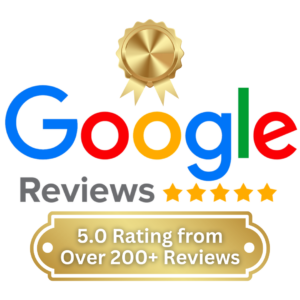What is Tennis Elbow?
Most people have heard of the condition “Tennis Elbow” and that it involves pain located on the outer part of the elbow. With the name of the condition though, we have to ask ourselves is it truly caused by excessive playing of tennis? Of course for those who play tennis, it certainly can be. However, in this author’s experience this condition affects more people who don’t play tennis at all! It is also referred to as lateral epicondylitis or lateral epicondylalgia.
The word “itis” means inflammatory and “algia” pain. Clearly, identifying one name for this condition has been difficult. So what should the appropriate name be for this condition? There has been a push to change the language used as the condition is often degenerative in nature, not inflammatory. Naming the condition as a tendinopathy appears to be the most appropriate. 1,11
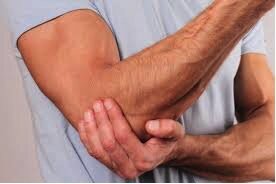
Origins of Lateral Elbow Pain
So now that we’ve established that lateral elbow tendinopathy may be a better term for this condition, where does it come from? It is primarly caused by contractile overloads (repetitive movements or lifting something too heavy) that chronically stress the extensor tendons of the forearm near the elbow. These activities include racquet sports, jobs that involve reptititve lifting or reaching tasks and even sedentary desk jobs. Elbow pain can increase gradually over time, but usually is sudden with movement and reduces with rest. Even seemingly nonthreathening stresses like picking up a cup of coffee can become very painful.
Another proposed origin of this condition from an old injury. An example would be a fall on an outstretched hand (FOOSH) injury. This can lead to what is called an abduction lesion of the elbow. The ulna of the forearm becomes abducted during the fall and the radius forced distally. 6 What this means is that the elbow is out of its normal position and “stuck” in a new one.
This change in the forearm will not be apparent on x-ray films, but over time results in a change in the carrying angle of the elbow and limits normal wrist and elbow mobility. This silent injury may go unnoticed, but the elbow and hand will continue to compensate for these losses of motion. Eventually, lateral elbow tendinopathy may present itself as a result, seemingly out of nowhere.
The neck must also be considered an origin of lateral elbow pain. The concept of regional interdependence illustrates that a primary symptom may be directly or indirectly related to, or influenced by, impairments from various body systems regardless of primary symptom proximity. 13 Long story short, the elbow pain can be coming from your neck! If there is dysfunction in lower neck, pain/numbness can be referred to the lateral elbow and also cause incoordination/weakness of the forearm muscles resulting in local elbow tissue injury. When this area of the neck is affected, there can be changes in axoplasmic flow and nutrition to the elbow, which increases vulnerability of the elbow tissue. 5
How Do We Treat It?
As you can imagine, understanding the source of lateral elbow pain from a patient’s perspective can be complicated. A physical therapist can be a good resource for determining the “root cause” of lateral elbow pain. If arising from the neck, treating the neck with manual therapy and exercise can reduce pain in remote regions such as the elbow. 3 If originating from the elbow, a wide variety of techniques can be helpful including manual therapy, modalities, exercise, dry needling and taping.
Deep transverse frictions can promote inert and contractile tissue healing and interstitial mobility. Think of this as a deep and specific massage to the muscle/tendons of the elbow. Healing can occur by stimulating blood flow, distorting collagen fibers, stimulating collagen formation and stimulating mechanoreceptors to inhibit pain. This technique can greatly reduce elbow pain, recovery time, and improve healing.
Dry needling is often used to treat tendon or muscle trigger points, which are painful taut bands of muscle. It is believed to treat tendinopathy by disrupting chronic degenerative processes and encouraging localized bleeding and fibroblastic proliferation to tissues of interest (healing). 12 This technique uses a solid filament needle inserted into muscle or tendon. Stimulating local twitch responses are shown to reduce concentration of nociceptive substances (substances related to pain perception) in the chemical environment near trigger points. 2,4
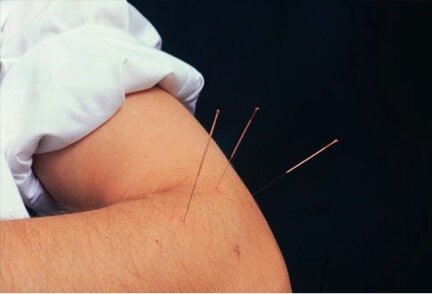
Diamond taping improves wrist extension force and grip strength and reduces lateral elbow pain. 9The proposed mechanism is that the taping disperses stresses generated by muscle contraction, thus reducing painful inhibition and allowing a more forceful muscular contraction. This means it can make the elbow stronger and less painful for those who cannot avoid certain painful tasks in their every day life.
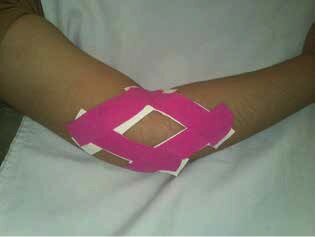
Ultimately, exercise is key for recovery from this condition. Part of exercise for this condition will include some pain and understanding this is crucial. Research shows that having patients realize that pain is non-threatening allows the load and exercise volume to be increased thus improving tissue healing response. 10 Eccentric exercises are a valuable exercise for treating lateral epicondylitis. 7,8 This type of exercise refers to the tension being applied to muscle as it lengthens. An example of this for the elbow would be starting with the wrist extended upward with the help of the other hand, and slowly lowering the wrist by itself.
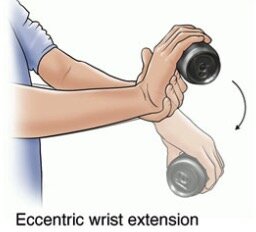
For those who struggle to recover, an inter-disciplinary approach can be beneficial. Platelet Rich Plasma (PRP) is a technique used involving injecting your own platelets to accelerate healing of tendon, muscle, ligaments or joints. Evidence shows PRP is more effective at reducing elbow pain than autologous blood in the short term. 14 Evidence for using it for the elbow specifically is developing. A physician performs this technique, but physical therapy is usually involved at some point before or after receiving an injection.
It can be difficult to determine the origin of lateral elbow pain as highlighted in this article. Consulting with a physical therapist is highly recommended, as they will be able to determine the root cause of the pain and treat it appropriately.
If you would like to speak with a physical therapist please click below to schedule an evaluation or schedule a 20 minute FREE screen.
The WildHawk PT blog is for information purposes only. The bloggers are licensed physical therapists. The content published in this blog represent the opinion of the author based on their expertise and experience. The content provided does not constitute medical advice and should not be relied on for making personal health decisions.
1. Ali M, Lehman TA. Lateral elbow tendinopathy: a better term than lateral epicondylitis or tennis elbow. J Hand Surg Am. 2009;34(8):1575‐1576. doi:10.1016/j.jhsa.2009.06.024
2. Chen JT, Chung KC, Hou CR, Kuan TS, Chen SM, Hong CZ. Inhibitory effect of dry needling on the spontaneous electrical activity recorded from myofascial trigger spots of rabbit skeletal muscle. Am J Phys Med Rehabil 2001; 80: 729–35.
3. Coombes BK, Bisset L, Vicenzino B. Management of Lateral Elbow Tendinopathy: One Size Does Not Fit All. J Orthop Sports Phys Ther. 2015;45(11):938-49.
4. Ga H, Choi JH, Park CH, Yoon HJ. Dry needling of trigger points with and without paraspinal needling in myofascial pain syndromes in elderly patients. J Altern Complement Med. 2007; 13: 617– 624.
5. North American Institute of Orthopaedic Manual Therapy. NAIOMT C-616: Cervical Spine II. Resource Guide. December 6-8, 2019.
6. North American Institute of Orthopaedic Manual Therapy. NAIOMT C-626: Upper Extremity. November 1-2, 2019.
7. Peterson M, Butler S, Eriksson M, Svärdsudd K. A randomized controlled trial of eccentric vs. concentric graded exercise in chronic tennis elbow (lateral elbow tendinopathy). Clin Rehabil. 2014;28(9):862‐872. doi:10.1177/0269215514527595
8. Raman J, MacDermid JC, Grewal R. Effectiveness of different methods of resistance exercises in lateral epicondylosis–a systematic review. J Hand Ther. 2012;25(1):5‐26. doi:10.1016/j.jht.2011.09.001
9. Shamsoddini A, Hollisaz MT. Effects of taping on pain, grip strength and wrist extension force in patients with tennis elbow. Trauma Mon. 2013;18(2):71–74. doi:10.5812/traumamon.12450
10. Smith BE, Hendrick P, Bateman M, Holden S, Littlewood C, Smith TO, Logan P. Musculoskeletal pain and exercise—challenging existing paradigms and introducing new. British journal of sports medicine. 2019 Jul 1;53(14):907-12.
11. Stasinopoulos D, Johnson MI. ‘Lateral elbow tendinopathy’ is the most appropriate diagnostic term for the condition commonly referred-to as lateral epicondylitis. Med Hypotheses. 2006;67(6):1400‐1402. doi:10.1016/j.mehy.2006.05.048
12. Stoychev V, Finestone AS, Kalichman L. Dry Needling as a Treatment Modality for Tendinopathy: a Narrative Review. Curr Rev Musculoskelet Med. 2020 Feb;13(1):133-140. doi: 10.1007/s12178-020-09608-0.
13. Sueki DG, Cleland JA, Wainner RS. A regional interdependence model of musculoskeletal dysfunction: research, mechanisms, and clinical implications. The Journal of manual & manipulative therapy 2013; 21(2): 90-102.
14. Thanasas C, Papadimitriou G, Charalambidis C, Paraskevopoulos I, Papanikolaou A. Platelet-rich plasma versus autologous whole blood for the treatment of chronic lateral elbow epicondylitis: a randomized controlled clinical trial. Am J Sports Med. 2011;39(10):2130‐2134. doi:10.1177/0363546511417113








